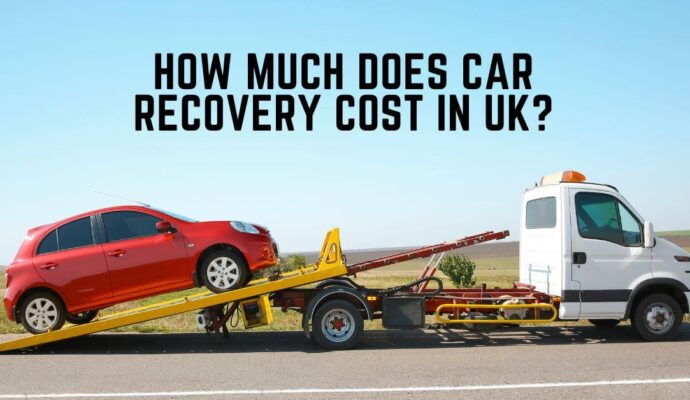Mecca is a holy city of Islam located in the western region of Saudi Arabia. There is the birthplace of Prophet Muhammad and the holy place of Kaaba is also located. Every year, millions of Muslims from around the world head to Mecca during the Hajj, one of the five pillars of Islam. The city is also home to many historical and cultural sites, including Al-Masjid-al-Haram (the Grand Mosque), the largest mosque in the world, and the Black Stone.
The choice of holy places for tourists and pilgrims will vary during a visit to Saudi Arabia. As a non-Muslim, you cannot enter Mecca but everything is open to Muslim tourists or pilgrims. Today, millions of Muslims around the world move to reach each of them which are existed in this city. Most of them are those who are going for Hajj or Umrah.
They especially emphasize getting Ziyarats offers through travel agents in Hajj packages and Umrah packages. Because they want to feel the time when our beloved Prophet Muhammad (peace and blessings of Allah be upon him) would have stayed or passed there.
Sacred places during Mecca:
- Al Haram Mosque
- Jannat ul Mualla
- Cave of Hira
- Cave of Thawr
- Jabal-Ar-Rahmah
- Jamarat and Mina Jamarat
- Masjid Aisha
- Masjid Jinn
- Masjid al-Khaif
Al Haram Mosque:
Al Haram Mosque, also known as the Grand Mosque, is located in the holy city of Mecca, Saudi Arabia. It is the largest mosque in the world and is considered the holiest site in Islam. The mosque surrounds the Kaaba, which is the most sacred site in Islam and the direction toward which Muslims pray during their daily prayers. The mosque can accommodate up to 2 million worshippers during the Hajj, the annual Islamic pilgrimage to Mecca. The mosque’s most distinctive feature is the Kaaba, a cube-shaped structure draped in a black and gold cover that is situated at the centre of the mosque.
The mosque is also home to many other significant Islamic relics and artefacts, including the Maqam Ibrahim (the Station of Abraham), the Zamzam well, and the Black Stone. The Al Haram Mosque is a significant centre of worship and pilgrimage for Muslims around the world.
Jannat ul Mualla
Jannat ul Mualla is an ancient cemetery located in the holy city of Mecca, Saudi Arabia. It is also known as Al-Hajun or Al-Hajon. Jannat ul Mualla is believed to be the final resting place of many important figures in Islamic history, including several members of the Prophet Muhammad’s (PBUH) family, companions, and other notable personalities.
The cemetery is situated approximately 1.5 kilometres east of the Masjid al-Haram, the holiest site in Islam, and covers an area of about 8,000 square meters. The site is considered to be extremely sacred, and many Muslims make a point of visiting it when they perform the Hajj or Umrah pilgrimage to Mecca.
Over the years, the cemetery has undergone numerous renovations and expansions. Today, it is a well-maintained and organized cemetery, with rows of graves marked by simple headstones. Despite its historical and religious significance, Jannat ul Mualla remains a peaceful and quiet place, where visitors can pay their respects to the departed souls in a serene and reflective atmosphere.
Cave Hira:
Cave Hira is a small cave located on the Jabal al-Nour mountain near Mecca, Saudi Arabia. It is a significant site for Muslims as it is where the Prophet Muhammad is believed to have received the first revelations of the Quran from the Angel Gabriel. The Prophet Muhammad (Peace Be Upon Him) used to retreat to this cave to meditate and reflect, especially during the month of Ramadan, before he received his first revelation in the year 610 CE.
The cave is about 3.5 meters long and 1.6 meters wide and can be accessed via a steep climb up the mountain. Today, the cave is a popular destination for Muslim pilgrims visiting Mecca, who make the climb to the cave to pay their respects to the Prophet Muhammad (PBUH) and to seek spiritual guidance and inspiration.
Cave Thawr
The Cave of Thawr is a cave located in the mountain of Thawr, near the city of Mecca in Saudi Arabia. The cave is significant for Muslims because it is believed that the Prophet Muhammad (Peace Be Upon Him) and his companion, Abu Bakr, sought refuge in the cave during their migration from Mecca to Medina in the year 622 CE. The tribe of Quraysh had put a bounty on the Prophet’s head because of opposition to the teachings of the Prophet. Then by the order of Allah, you (PBUH) and your companion Abu Bakr migrated from Mecca to Medina. According to Islamic tradition, a spider spun a web at the entrance of the cave.
When the pursuers reached the mouth of the cave, seeing the spider’s web, they believed that no one had entered the cave for some time. Thus, the Messenger of Allah (may peace be upon him) and Abu Bakr (may Allah be pleased with him) stayed until their pursuers passed by. The Cave of Thawr is a significant site for Muslims, and it is visited by many pilgrims who travel to Mecca to perform the Hajj or Umrah.
Jabal-Ar-Rahmah
Jabal-Ar-Rahmah, also known as the Mount of Mercy, is a small hill in the plain of Arafat, near Mecca in Saudi Arabia. It is a significant site for Muslims who perform the Hajj, as it is believed to be where the Prophet Muhammad (Peace Be Upon Him) delivered his last sermon during his farewell pilgrimage in the year 632 CE.
On the 9th day of the Islamic lunar month of Dhu al-Hijjah, which is known as the Day of Arafat, pilgrims gather on the plain of Arafat, where Jabal-Ar-Rahmah is located. It is one of the most important rituals of the Hajj, and it is believed that standing on this hill is a crucial part of the Hajj and that the prayers offered here are highly valued.
Muslims who visit the site often climb to the top of the hill to offer prayers and seek blessings. The hill is also an important location for Muslims not performing the Hajj, as it is considered a highly spiritual and blessed site.
Jamarat and Mina Jamarat
Jamarat refers to the three stone pillars in Mina, Saudi Arabia, that are stoned by Muslim pilgrims during the annual Hajj pilgrimage. The stoning ritual is part of the Hajj rites and takes place on the 10th, 11th, and 12th day of the Islamic lunar month of Dhu al-Hijjah.
Mina is a tent city located about 5 kilometres east of Mecca, and it is where Muslim pilgrims stay during the Hajj pilgrimage. The Jamarat pillars are located in a valley called Mina Jamarat, which is close to the campsite.
The stoning ritual involves throwing pebbles or small stones at the three pillars, symbolizing the rejection of Satan and his temptations. The pillars represent the three places where Satan tried to tempt Prophet Ibrahim (Abraham) when he was on his way to sacrifice his son Ismail (Ishmael) as an act of obedience to God.
The stoning of the Jamarat is considered to be one of the most significant rituals of the Hajj pilgrimage, and it is a way for Muslims to express their devotion to God and reaffirm their commitment to their faith. The stoning usually takes place in the morning and is followed by other rituals in Mina, including the sacrifice of an animal, the shaving of the head, and the Tawaf Al-Ifadah, which is the circumambulation of the Kaaba in Mecca.
Masjid Aisha
Aisha Mosque is a relatively small mosque, situated approximately 1.5 kilometres south of the Grand Mosque (Masjid al-Haram) in Mecca, and is considered to be one of the important landmarks of the city.
The Aisha Mosque is named after Aisha bint Abi Bakr, one of the wives of the Prophet Muhammad (PBUH) and a prominent figure in Islamic history. According to tradition, Aisha (RA) lived near the site of the mosque and used to visit it frequently to offer prayers.
The mosque has been renovated and expanded over the centuries, with the most recent renovation taking place in 2010. The mosque now has two floors and can accommodate up to 3,000 worshippers. It also has a small library and a prayer hall exclusively for women. The mosque is open to both men and women and is a popular destination for pilgrims visiting Mecca.
Most Muslims used this mosque to put on Ihram for Hajj and Umrah. Sometimes, Muslims first go to their residences and then start Umrah after putting on Ihram at Aisha Mosque. Because is the nearest Miqat for inhabitants of Makkah.
Be sure to inform your travel agent if you have the same plans so that he can arrange the best transport for you according to the Umrah packages you have booked.
Masjid al-Khaif
Masjid al-Khaif, also known as the Mosque of the Tent, is located in Mina, a valley about five kilometers east of the Grand Mosque in Mecca, Saudi Arabia. The mosque is situated on the plain of Arafat, where Muslims performing the annual Hajj pilgrimage stay for a day of prayer and reflection.
Masjid al-Khaif is one of the largest mosques in the world and can accommodate up to 1.6 million worshippers at a time. The mosque is named after the tent of the Prophet Ibrahim (Abraham), which is believed to have been located on the site. According to Islamic tradition, the Prophet Ibrahim and his son Ismail (Ishmael) built the Kaaba, the holiest site in Islam, on this site.
During the Hajj pilgrimage, Muslim pilgrims gather at Masjid al-Khaif to pray and perform certain religious rituals, including the stoning of the devil, which takes place in nearby Mina. The mosque is also open to visitors throughout the year and is considered an important historical and religious site in Islam.
Birthplace of Muhammad (Peace Be Upon Him)
The birthplace of the Prophet Muhammad (peace be upon him) is a house located in the city of Mecca, Saudi Arabia. The house is known as the “House of the Mawlid” or “House of Abdullah ibn Abdul-Muttalib” and is situated in the Suq Al-Layl neighborhood of Mecca.
The house was the birthplace of the Prophet Muhammad in the year 570 CE and is considered to be one of the holiest sites in Islam. It is a simple stone structure with a small courtyard and a prayer room and has been restored and renovated several times over the centuries.
Today, the birthplace of the Prophet Muhammad is part of a larger complex known as the Makkah Region Development Authority, which includes a museum and a library. The complex is open to visitors and pilgrims throughout the year. It’s an important destination for Muslims from around the world who come to pay their respects to the Prophet Muhammad and learn more about the history and traditions of Islam.
There is much more for tourists as Mecca is an amazing city with a rich, modern, historical culture. Non-Muslims cannot enter here but it is open to all Muslims whether they are coming for pilgrimage, business, tourism etc. Courtesy byLabbaik Hajj Umrah





More Stories
Canada: 3 Reasons You Should Visit
Explore Glasgow’s Hidden Gems with Sightseeing Tours: Your Ultimate Guide
The Umrah Effects: How the Pilgrimage Impacts Lives